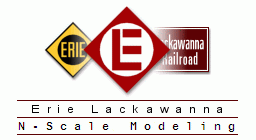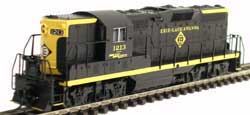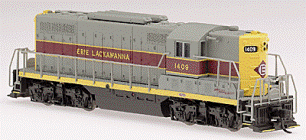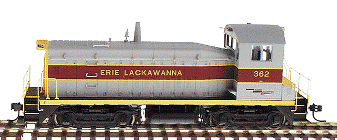| www.ScrantonStation.com |
    |
| DC v DCC |
|
|
The World According to DCThe Gulf Summit & Susquehanna Valley Railroad from the Nine N-Scale Layouts book is designed for DC operation with 4 throttles. Below is the block diagram schematic that I wired up. There are some extra blocks in it compared with the design in the book, but not too many and mainly on the lower level main.
This is how I originally wired the layout. I had never heard of DCC and didn't know any different. The wiring from the book allowed for 4 throttles as follows:
Well, this just did not make much sense to me with respect to how I wanted to run the layout. This required two changes of throttle to run a train out of the lower level yard, up the grade to the top, around the top and back down again. This was not how I wanted to operate. I saw the lower level as the main part of the layout and so, I sacrificed one of the upper level throttles (D) and, instead, wired the output of throttle A or B to where the throttle D would be wired. This meant that throttle A or B could control anywhere that D had been planned to control, i.e. the top and the interchanges. Couple that with the fact that A or B could control a train on the lower level and the interchanges and you have the capability to control a train anywhere from either the A or B throttle. I can now run a train not only on the lower level (standard capability of the original plan), but up the interchange tracks (original plan) and then anywhere around the top (the modified wiring plan). Thus the two changes of throttle became no change of throttle But I still need to make sure that the block switches are set correctly. All 24 block switches plus the A/B selectors. And I had an eight year old and, sometimes, his eight year old friends too. Try explaining this to them and see the enjoyment drain right out of their faces. Then I heard of DCCReading up on it, that sounded like exactly what I wanted. But how easy would it be to convert to DCC? Not hard as it turns out, given that I had already modified the layout so that you could control anywhere on the track with either of the throttle A or throttle B. The steps:
Now, every block was receiving the DCC track voltage and signal. Presto, instant DCC in 5 minutes Ok, the reversing look still required the manual switching of polarity, just as before. But, this sure was simple to switch. FWIW, I bought a Digitrax AR-1 to automate the reversing loop polarity switch. Done. Finished. Simple as that! If I'd wired it per the book, it would not have been much more complicated. Step #1 would have had me set all the upper blocks to throttle C and step #4 would have had me connect the Zephyr to the inputs for both throttle A and throttle C.
And now it's simpler for my son and, especially, his friends! |
|